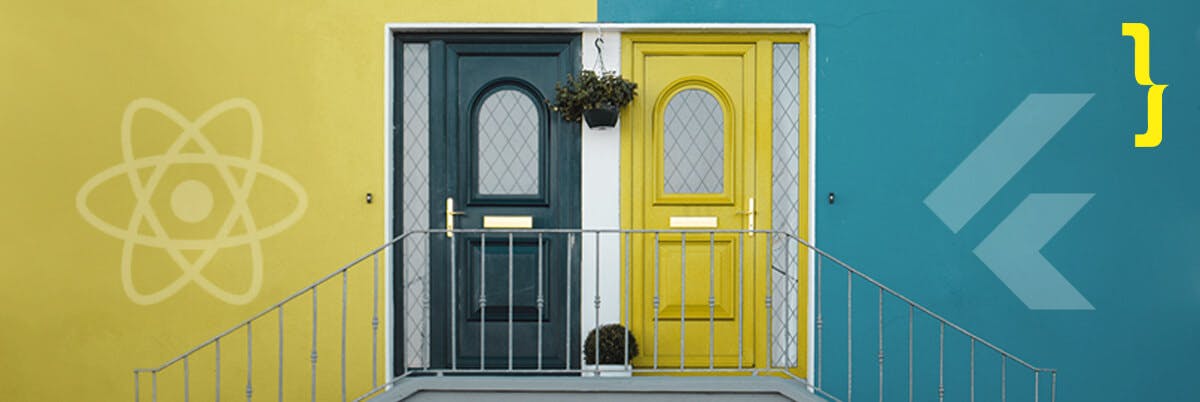Choosing between React Native and Flutter, two widely popular UI frameworks, can be tricky. It all depends on what you’re applying them for and how you’re using them in your mobile app. Both are open-source frameworks for developing native mobile apps from scratch. We have gathered the most important details to compare these technologies.
Table of Contents
UI Frameworks
Flutter is a framework developed by Google to meet Google’s development demands. Flutter has grown in popularity as a result of this.
React Native, on the other hand, is a hybrid of all existing mobile web development technologies. If you’re familiar with both technologies and frameworks, you may have heard that Google tried to incorporate the greatest features of React Native into their own tool.
Flutter’s Dart has been compared to high-level programming languages like C#, Kotlin, and Java. At the same time, it has some JavaScript features. Continue reading to get a complete understanding of the mobile development market.
What is React Native?
React Native is a popular cross-platform framework that uses the famous JavaScript language to create mobile apps. It first debuted in 2015, which was a long time ago. So, if you decide to start writing in React Native, you will certainly find experienced JS developers to assist you.
Discord, Tesla, Shopify, Pinterest, UberEATS, Soundcloud, and Skype all use Facebook’s React Native technology in their apps for their modern and engaging UIs.
One of the core features of React Native is Expo. It’s a free and powerful tool for embedding and running React Native apps on the web, iOS, and Android.
When working with an application’s architecture, React Native developers frequently employ Flux or Redux state containers. React Native functions don’t have any side effects that return the state of the views at any given time.

You might also be interested in our article about Redux:
Redux vs. React Context: Which Should You Use?
What is Flutter?
Flutter is a cross-platform application framework introduced by Google in 2017. Flutter is a user interface toolkit for online and mobile app development that allows you to create dynamic, responsive apps from a single codebase.
Flutter apps are written in Dart, an object-oriented and class-based programming language designed for creating fast and powerful apps with complete control over the rendering stack. Dart is a very easy language to learn because its syntax is very close to that of JS. Flutter is popular among developers because of its developer-friendly architecture and gorgeous widgets.
Flutter is, by the way, completely accepted by Material Design. Flutter was used to create large products like Google Adwords, Alibaba, Tencent, and Hamilton applications.
Flutter was originally designed for OS and Android development, but it was later ported to the desktop and other prominent platforms. Clean UI interfaces of programs that operate smoothly on Mac, Linux, iOS, Android, and Windows, as well as the web, are one of Flutter’s key features.
In terms of long-term project development, it is a faster and easier method. The obvious disadvantage of cross-platform tools is that they have numerous implementation and performance limits.
You deal with stateless and stateful widgets in Flutter. In React Native, widgets are the same as components. Flutter widgets, on the other hand, are not adaptive, therefore platform-specific adaption must be done manually. Flutter’s core architecture is BLoC. (Business Logic Component).
Well, what is BLoC?
Business Logic Component, also known as domain logic, describes how your entities relate to the business problem you’re trying to solve. All BLCs are independent, preparing frontend data for sending to the backend and backend data for presentation in a visual application component (VAC).
Moreover, Flutter enables hot reloading, which lets you re-run your app with the changes you’ve made, accelerating development. Android Studio, IntelliJ Idea, and Visual Studio Code all officially support Flutter.
React Native and Flutter Similarities
Both frameworks have a lot in common, such as a clean UI and native functionality on the inside, as well as code reuse and hot reloading possibilities. It saves a lot of time during development because you can identify UI errors right away and you don’t have to recompile the app every time. Hot reloading with React Native, on the other hand, is only possible when you extend React Component. You should edit the .babelrc file if you work with your own base classes.
Flutter is for native apps when it comes to accessing Android’s deep features. React Native is finally mature, and it can handle progressive web apps with ease.
Performance
- React Native
React Native gives web apps a native look and performance that’s close to native. A React Native application is made of 2 different parts: the JavaScript codes and the Native codes. React Native developers do their best to improve and optimize app performance to reduce the need for manual code fixing. RN is better than hybrid app frameworks like Ionic and Cordova. - Flutter
Flutter doesn’t use a web view or the operating system’s native controls. In Flutter you create widgets with the help of a Skia rendering engine. So, the Flutter apps combined with this Arm C./C++ library, provide really high performance. But, Flutter depends on the packages ecosystem, e.g. the more packages you add, the bigger app you get.
Code Structure
- React Native
The code structure of React Native is a lot direct with JavaScript that allows creating MVC just from scratch. RN has an intuitive architecture that is compared to React. How to set up the development environment for RN? The simplest way is to use Expo or React Native CLI. Expo is a free tool that allows you to develop and deploy RN applications with native code writing. - Flutter
Start with Flutter through the main.dart file. This file is really important because it will execute the code for iOs and Android. The main. should hold very little code and only serve as an overview to an app. The widget being run by the runApp function should be a StatelessWidget.
Development Time
- React Native
Coding with React Native is faster thanks to several third-party libraries which optimize the design process. Plus, custom libraries really speed up the development. It all depends on several factors, such as the developer’s expertise, as well as app scalability and functionality. - Flutter
Building complex UI elements, you will have to add separate code files for different OS platforms. Rough estimates show that it takes around 250-400 person-hours to develop a common cross-platform app on Flutter.
React Native:
Pros:
- It uses JavaScript, which is widely understood, as opposed to Flutter, which requires extensive knowledge of Dart
- React Native is a good tool for creating minimal viable products. Because of JavaScript which is easy, known, and loved by everyone. Though, in the long run, we would suggest using TypeScript instead of JavaScript.
- Because React Native has been around longer, it has a larger community, libraries, and solutions.
- Swift, Java, Objective-C, and native modules are all supported by React Native, allowing for the smooth handling of sophisticated processes like video playback and image manipulation.
- Similar code base between React and React Native, it will be much easier to make a mobile app, when you have a web app.
- In RN, you need to write your design styles from scratch, or you can find ready designs, which are in plenty.
Cons:
- There are fewer ready-to-use components.
Flutter:
Pros:
- Flutter has a multi-tier architecture that is good for quick UI customization. It may help you animate components like video, text, and visuals
- UI separation from the native controls
- Flutter 2.0 version
- Recently Flutter was updated with a broad range of new target platforms like web and desktop from a single code base.
Cons:
- No support from web browsers
- No guarantee, due to its newness and insufficient time to prove itself
- Flutter applications are huge, approximately 3 times larger than a native iOS or Android app
- Flutter has a bit messier styling due to the separation between template styles and data in a Dart life
- Talent shortage
React Native or Flutter?
One of the most important aspects of mobile and web app development is meeting deadlines.
Both React Native and Flutter are cross-platforms, which reduce time-to-market. Additionally, their third-party libraries and ready-to-use components make using them to construct your project more efficient.
Flutter and React Native, on the other hand, can do more than just speed up development; they can also lower project expenses. These are the main reasons why either framework should be considered for your project.
But which option provides the quickest time to market?
That, of course, is dependent on the specifics of your project and the skill balance of your team. Do your programmers have any experience with Dart? If this is the case, programming with Flutter will be a breeze.
If you need a cross-platform app with well-described documentation, then Flutter will fit your needs. Are your programmers well-versed in JavaScript? If so, React Native appears to be the best option. Do you wish to use native UI components to create the user interface for your app? If so, go with React Native. Is it important to design with your brand in mind? If that’s the case, we think Flutter is a good fit.
Keep in mind that each application is unique, so you must evaluate it on its own merits.

